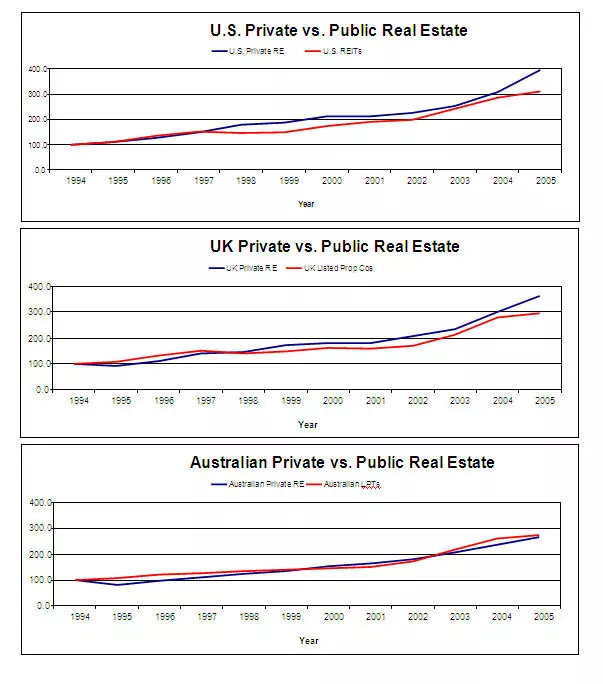
The Evolution of the Global Real Estate Market
Over the past decade, the global real estate market has undergone significant changes. The influx of capital, diverse investment opportunities, and increased interest from institutional investors have led to the expansion of both the private commercial real estate equity market and the public real estate equity market. In this article, we will explore the differences and similarities between these two market segments and their impact on investors' portfolios.
The Growth of Private and Public Real Estate Markets
The investable universe of the private commercial real estate equity market has grown from approximately USD $6.2 trillion to over USD $8.0 trillion in just a few years. The U.S., Japan, and the UK account for approximately half of the investable universe. On the other hand, the total market capitalization of publicly traded real estate companies has tripled within the last six years, reaching approximately $800 billion by the end of 2007.

However, the global financial crisis and other factors have caused a significant decline in the market capitalization of publicly listed real estate around the world. Despite this correction period, real estate investment trusts (REITs) have gained popularity among small investors as they offer access to real estate investments that were traditionally limited to institutions or wealthy individuals.
The Rise of Real Estate Investment Trusts (REITs)
REITs were introduced in the U.S. in 1960 to provide small investors with the opportunity to invest in income-producing real estate. A REIT is a special type of corporation that owns and operates real estate. The benefits for investors include liquidity, limited liability, professional management, and favorable tax treatment. The success of REITs in the U.S. has prompted other countries, such as the UK and Germany, to adopt similar legislation.
Risk and Return Characteristics of Private and Public Real Estate
Historically, the relationship between private and public equity real estate has been a topic of interest. Private real estate markets, represented by indices like NCREIF (U.S.), PCA (Australia), and IPD (Europe), have shown different behavior compared to the more volatile public real estate markets. However, studies have demonstrated that public and private real estate indices have low correlations with each other, as well as with other asset classes like bonds and large-cap stocks.
Portfolio Diversification and Performance
Adding public real estate assets, such as REITs, to a mixed-asset portfolio can lead to enhanced risk-adjusted returns. Studies have shown that including REITs in a portfolio improves performance, even when the portfolio already contains private real estate investments. The correlation between publicly listed real estate and small stocks is higher, indicating potential diversification benefits.
Accounting for Smoothing and Leveraging Effects
It is important to note that private and public real estate indices cannot be directly compared due to appraisal smoothing and leveraging effects. Appraisal smoothing is common in the private market, where infrequent transactions allow appraisers to determine market values. On the other hand, publicly listed real estate values include the leveraging effects of companies. Unsmoothing and unlevering procedures are required to accurately compare the two markets.
Price Discovery and Information Flow
Efficient price discovery is crucial in understanding the relationship between private and public real estate markets. Inefficient information flows can lead to market prices deviating from fundamental values. Studies have shown that publicly listed real estate markets can predict prices in the private market by as much as a year. This effect is most pronounced in the UK, followed by the U.S. and Australia.
Conclusion
The global real estate market has evolved into a distinct asset class that offers unique investment opportunities. The risk and return characteristics of private and public real estate are influenced by appraisal smoothing and leveraging effects, making direct comparisons challenging. However, adding publicly listed real estate assets to a mixed-asset portfolio can enhance risk-adjusted returns. It is important for investors to consider these factors and seize potential arbitrage opportunities.
In conclusion, the private and public real estate markets have their own strengths and characteristics. By understanding their differences and similarities, investors can make informed decisions and maximize their portfolio returns in this evolving landscape.

















